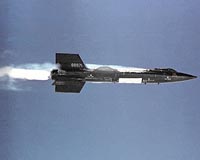 |
Beijing, China (XNA) Sep 18, 2009 The preliminary selection for candidates of China's second batch of astronauts has finished, with candidates including 30 men and 15 women who are all airforce pilots, authorities said Thursday. Among them, five men and two women would be final candidates to join the space program. And "it is the first time women have been up for selection in China's space development cause," authorities said. The 45 candidates, between the ages of 27 and 34, will undergo further tests, including physiological and psychological checks, an air force official said. He said the male candidates are all fighter plane pilots and the female candidates are aero-transport pilots. All serve in the People's Liberation Army (PLA) Air Force and at least hold a college degree. Many of them have conducted important flight missions such as rescue tasks for the massive Wenchuan earthquake on May 12, 2008 in southwestern Sichuan Province, and various military drills. The authorities said they "all master excellent flight skills and boast great psychological quality." The preliminary selection, conducted by the PLA Air Force, started in May. Applicants had undergone medical and psychologicalexaminations as well as checks on family background and other "comprehensive assessments". China has sent six astronauts into space since 2003 when it sent its first astronaut Yang Liwei in home-grown spacecraft Shenzhou-5. It was followed by a two-man mission that carried Fei Junlong and Nie Haisheng in 2005. The trio of Shenzhou-7 astronauts Zhai Zhigang, Liu Boming and Jing Haipeng orbited the earth for three days in September last year. Zhai became the first Chinese to walk in outer space on Sept. 27, 2008. His spacewalk lasted about 20 minutes and was believed to help pave the way for the country's next space mission - the space docking in 2011 and a manned space station in 2020. China plans to launch the Shenzhou-8 and Shenzhou-9 spacecraft in 2011. Before that, it would launch an unmanned space module into orbit as early as the end of 2010, which is expected to dock with the unmanned Shenzhou-8 in 2011. It would be the country's first space docking. The manned Shenzhou-9 is also expected to dock with the unmanned space module that year. Astronauts for Shenzhou-9 will be chosen from the first batch of 14 astronauts, which include six who had entered space before, said Wang Yongzhi, a former chief designer of China's manned-spaceproject, in March. However, the country's first female astronauts would need a long time of training and may not catch up with the Shenzhou-9 mission, Wang said.
Source: Xinhua News Agency Share This Article With Planet Earth
Related Links - Space Tourism, Space Transport and Space Exploration News
 The X-15, The Pilot And The Space Shuttle
The X-15, The Pilot And The Space ShuttleWashington DC (SPX) Sep 16, 2009 Fifty years ago in 1959, test pilot Scott Crossfield threw the switch to ignite the twin XLR-11 engines of his North American Aviation X-15 rocket plane and begin the storied test program's first powered flight. It was a real kick in the pants. "The drop from the B-52 carrier aircraft was pretty abrupt, and then when you lit that rocket a second or two later you definitely felt it," said ... read more |
|
| The content herein, unless otherwise known to be public domain, are Copyright 1995-2009 - SpaceDaily. AFP and UPI Wire Stories are copyright Agence France-Presse and United Press International. ESA Portal Reports are copyright European Space Agency. All NASA sourced material is public domain. Additional copyrights may apply in whole or part to other bona fide parties. Advertising does not imply endorsement,agreement or approval of any opinions, statements or information provided by SpaceDaily on any Web page published or hosted by SpaceDaily. Privacy Statement |